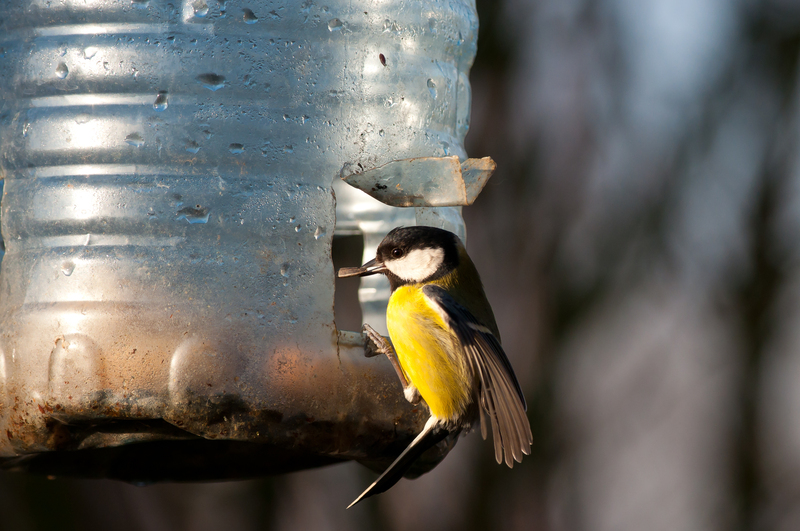Waste Not, Want Not: Crafty Transformations for a Greener Home
In our fast-paced world, the saying 'waste not, want not' feels more relevant than ever. Environmental consciousness is on the rise, and more homeowners are seeking sustainable ways to reduce waste while transforming their houses into eco-friendlier abodes. Embracing upcycling and reusing not only saves resources and lessens landfill burden, but also infuses your living space with originality and purpose. In this comprehensive guide, discover how you can adopt the "waste not, want not" philosophy through inventive, sustainable projects and eco-savvy habits for a greener home.
1. Understanding the Power of Upcycling and Repurposing
Many think of sustainability as simply recycling. But upcycling and repurposing are even more impactful means of giving household items a second life. Instead of discarding old furniture, clothes, jars, or kitchen scraps, you can transform them into practical or decorative pieces. This leads to resource conservation, money savings, and a distinctive, personalized home aesthetic.
- Upcycling: Elevates the value of waste materials by converting them into something new and improved.
- Repurposing: Assigns a novel use to objects that might otherwise be tossed away.
- Reusing: Continues an object's life cycle beyond its original function, reducing demand on new materials.
Let's explore creative avenues inspired by "Waste Not, Want Not" to cultivate a greener, more resourceful home.

2. Transforming Kitchen Waste for a Green Revolution
Kitchen Scraps: Composting and Beyond
Food waste, especially from kitchens, is a major contributor to landfill mass and greenhouse gas emissions. Instead of letting organic waste go to waste, here are crafty ways to utilize every peel, core, and crumb:
- Composting: Start a compost bin with fruit peels, coffee grounds, eggshells, and vegetable scraps. This homemade fertilizer is gold for your garden or indoor plants.
- Regrow Vegetables: Place leftover onion roots, celery bases, or potato eyes in water or soil and watch them sprout anew. A fun, sustainable experiment for all ages!
- Aroma Jars: Boil citrus peels or apple cores with cinnamon sticks for homemade air freshener. It's natural, non-toxic, and upcycles potential waste.
- Homemade Cleaners: Infuse vinegar with lemon peels to create a powerful, zero-waste kitchen cleaner.
Creative Uses for Glass Jars and Containers
Before you toss that pasta sauce jar or pickle container, consider their potential:
- Storage Solutions: Use clean glass jars for pantry organization: grains, spices, tea, and coffee look beautiful and stay fresh.
- Candle Holders: Old jars can be filled with wax and wicks for custom candles, or fairy lights for whimsical decor.
- Mini Greenhouses: Place jars over seedling pots to retain warmth and moisture--a trick that boosts plant growth.
- Lunch On the Go: Mason jars make excellent reusable lunch containers for salads, soups, or overnight oats.
3. Waste-Reducing Decor: Beautiful Green Living
Turn Old Furniture Into Treasured Pieces
You don't need to buy new to refresh your interiors. With a bit of imagination, tired furniture can be reborn:
- Paint & Resurface: Sand and paint dated dressers or tables in vibrant colors or patterns. Stenciling adds unique flair.
- Convert & Combine: Wooden doors can become tables, ladders into bookshelves, or crates into modular storage cubicles.
- Reupholstery: Revive old chairs and sofas by covering them with fabric scraps or upcycled jeans for a modern, patchwork look.
- Hardware Makeovers: Swap drawer knobs with vintage finds, leather strips, or even pretty sea shells for a fresh update.
Textile Transformations: Old Clothes and Linens
Fabrics can find new purpose in clever, eco-friendly home projects:
- Rag Rugs: Weave or braid old T-shirts, sheets, or towels into colorful rugs or mats.
- Pillow Covers: Turn unworn sweaters or curtains into cozy, custom pillowcases.
- Reusable Produce Bags: Sew mesh or lightweight fabric into bags for shopping trips--reduce plastic waste at the store!
- Patchwork Quilts: Combine sentimental clothing pieces to craft heirloom quilts, rich in memories and sustainability.
4. Redesigning Everyday Items for Sustainable Living
Repurposed Materials for DIY Organization
- Tin Can Organizers: Strip and paint empty tin cans, then mount to walls or stack to sort utensils, pens, or craft supplies.
- Bottle Cap Magnets: Glue fun images or photos into old bottle caps and attach magnets for your fridge.
- Shoe Boxes: Cover with attractive paper scraps to create drawer dividers or desk organizers.
- Wine Cork Boards: Assemble used corks into bulletin boards or table trivets for a rustic touch.
Creative Lighting With Discarded Goods
- Bottle Lamps: Convert wine or liquor bottles into statement lamp bases.
- Pendant Lights: Repurpose kitchen colanders, tin cans, or teapots into quirky pendant fixtures.
- CD/DVD Reflections: Old, scratched discs can be cut and arranged as shimmering mosaics on lampshades.
5. Green Gardening: Upcycle for Outdoor Bliss
Garden Projects From Everyday Waste
- Planters from Containers: Plastic bottles, tin jars, and yogurt tubs can be transformed into charming plant pots--drill drainage holes for longevity.
- Bird Feeders: Hang upcycled bottles, milk cartons, or peanut butter jars, filled with seeds, to invite feathered friends.
- Tool Holders: Attach old gutters, pipes, or cans to fence posts for handy storage of garden gear.
- Watering Cans: Repurpose milk jugs or detergent bottles by poking holes in the lid.
Landscape Features From Salvaged Materials
- Pallet Paths: Disassembled pallets create rustic walkways or raised garden beds.
- Tire Planters: Paint and stack used tires as flower beds or playful outdoor decor.
- Brick Borders: Broken bricks or tiles can form unique edging for garden beds while avoiding landfill.
6. Sustainable Substitutes and Waste-Free Habits for Family Life
Crafting Reusables for Zero-Waste Living
- Beeswax Wraps: Make eco-friendly food wraps from cotton fabric, beeswax, jojoba oil, and pine resin as a natural alternative to plastic wrap.
- Cloth Napkins & Cleaning Rags: Cut up old clothes, towels, or sheets into reusable napkins and wipes for everyday cleaning.
- Reusable Coffee Filters & Tea Bags: Sew muslin or cotton into shapes suitable for loose coffee or tea leaves, then rinse and reuse.
Teaching Kids to Waste Less
- Crafting with Recyclables: Save cardboard rolls, bubble wrap, or bottle caps for kids' art projects.
- Book Swaps & Toy Exchanges: Organize with neighbors or friends so children experience new items without increasing waste.
- DIY Birdhouses or Bug Hotels: Use scrap wood, cans, or boxes to create wildlife habitats, instilling respect for nature from an early age.
7. The Benefits of Embracing "Waste Not, Want Not" in Your Home
Adopting waste-not tactics does more than protect the environment--it enhances your lifestyle in meaningful ways:
- Financial Savings: Making your own decor, cleaners, and organizers saves money while reducing consumption.
- Personalized Spaces: DIY upcycling fills homes with unique, handcrafted charm that store-bought goods can't replicate.
- Teaching Sustainability: Instills valuable lessons in children and builds eco-conscious living into your family culture.
- Community Building: Many green initiatives and swaps foster connections among like-minded neighbors or friends.
- Reduced Carbon Footprint: Creating less trash and buying less new stuff directly decreases your environmental impact.

8. Getting Started: Waste Not, Want Not Tips for Beginners
Ready to join the waste-not, want-not movement but not sure where to begin? Here are some simple steps to get started transforming your home into an eco-friendly haven with minimal effort.
- Start Small: Pick one room or category (like food waste or storage) and tackle upcycling projects there first.
- Get Inspired: Look to online communities, social media groups, or books on sustainable living for ideas and motivation.
- Gather Tools: A basic DIY kit (scissors, glue, paint, brush, fabric scraps, etc.) goes a long way for creative transformations.
- Involve Family: Make sustainability a team effort--assign projects and celebrate eco-friendly accomplishments together.
- Log Your Progress: Track what you save, reuse, or create to stay motivated and share successes with others.
Conclusion: Every Home Can Be a Greener, Craftier Space
Waste Not, Want Not is more than a thrifty mantra--it's a lifestyle that empowers households to cut clutter, minimize their ecological footprint, and foster creativity under their own roofs. With these sustainable transformations, you can breathe new life into old objects, transform trash into treasure, and lead the way toward a cleaner, greener future. Every small action counts. Whether it's composting, repurposing, or upcycling, your journey to a greener home starts with a waste-not-want-not mindset and a little crafty inspiration!
Ready to take the next step? Share your crafty green transformations with friends, inspire your community, and remember: our planet (and your home) will thank you for every creative choice you make.